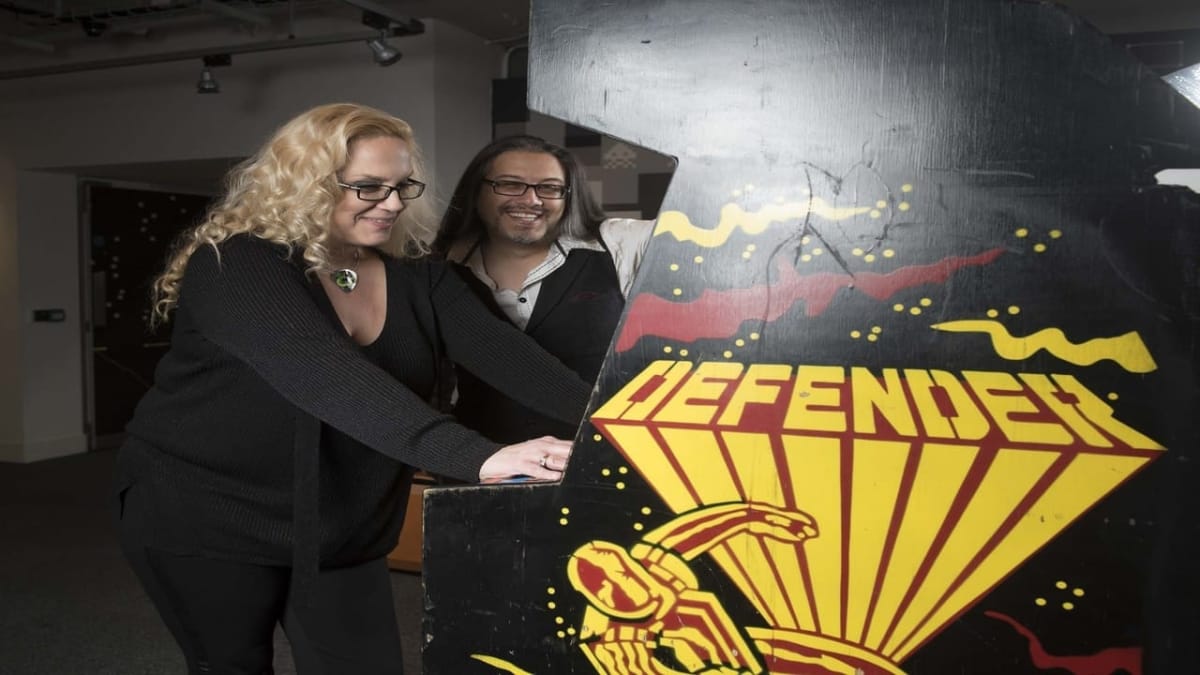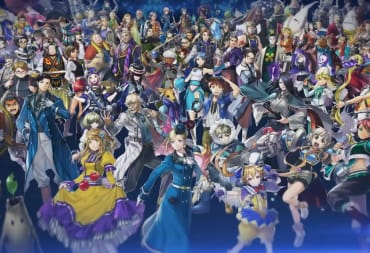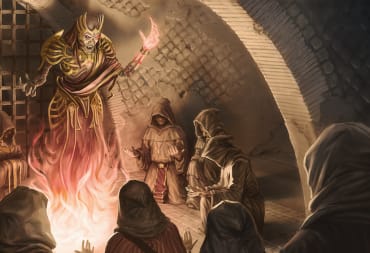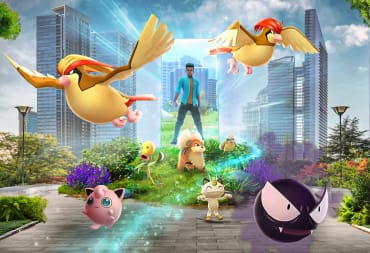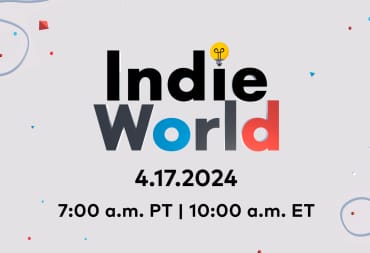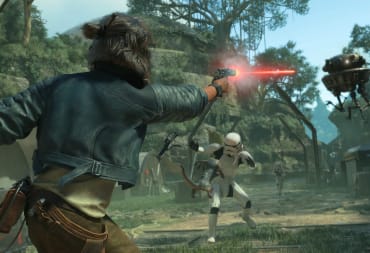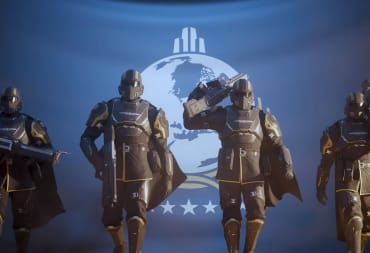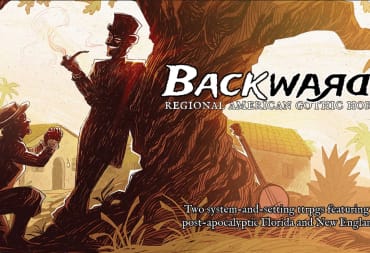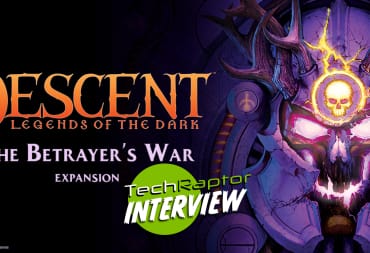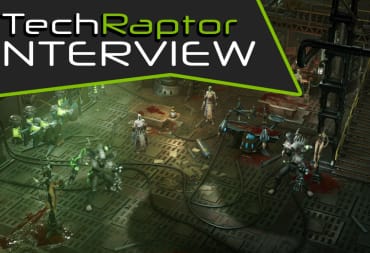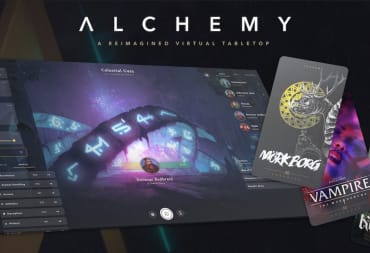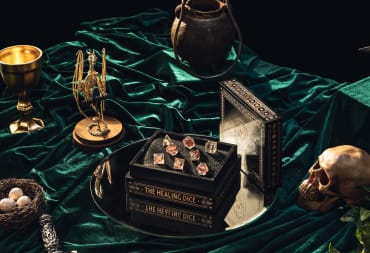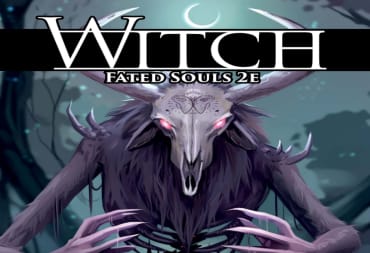In the next in our series of interviews from the Yorkshire Games Festival, TechRaptor's Dom O'Leary speaks to two legends of the industry: John Romero and his fellow games designer, and wife, Brenda. Many of our readers will know that John Romero has been making games since the early eighties and spent a significant part of his early career, from 1990 until 96, at id Software. In his time at id, he was the designer behind such classics as Commander Keen, Wolfenstein 3D, Doom, and Quake. Brenda Romero, on the other hand, started out as a tester at Sir-Tech on the Wizardry RPG series before rising up to work in design, eventually becoming lead designer. Her association with RPGs doesn't end there either; she later worked on the Dungeons & Dragons games for Atari.
This interview took place on the second day of YGF, shortly after Gary Napper of Supermassive Games gave an enlightening talk on the challenges of designing for VR. Earlier that day, Brenda Romero appeared on stage to give a talk on her career in the games industry. She covered a host of topics; her love for tabletop D & D and RPG games, starting out in the games industry and the responsibilities of developers toward inclusive game design, among other things. The talk wasn't focused on gender, but it did come up and raised perhaps one of the most interesting points of the talk. When speaking about women in games, Brenda said she found it odd how often she was asked "What's it like to work as a female games designer?" and similar questions. She made the fair point that if you change the gender in that question it becomes redundant, as no-one would ever ask "What's it like to work as a male games designer?" for instance. Elaborating further, the veteran designer described how one of the main challenges she has faced in the industry based on her gender is actually being asked to talk about her gender when she would rather be talking about her games, somewhat ironically.
Later in the day I had the opportunity to sit down with both Brenda and John Romero, who was due to speak the next day about his career at id Software and even managed to overcome my awe at meeting the pair to ask some questions.
TechRaptor: Following on from your talk, Brenda, you mentioned a lot about gender in the industry, but you also spoke about the responsibility of developers for fostering talent. What I wanted to ask was, what is your philosophy on that, and how are Romero games pursuing bringing new talent into the industry, what avenues would you encourage people to explore?
Brenda Romero: So in Ireland there’s two different ways that it’s done, it’s cultural in places not even something we had to set up, there’s something in third level high school – I think that’s tenth grade in America, two years before you graduate high school you do a couple of weeks in the industry to find out whether you like it and to get a feel for the job. Then the other thing is co-op placement, that happens in colleges in, I think, their third year and they get a placement for six to nine months depending on their major. We’ve hosted three, we’re still hosting two, but we’ve hosted a total of three co-op students and this year we have two high school transition year students coming on. We’re lucky that where we are now there’s a structure in place for doing that.
John Romero: We just talked with three university people already here.
BR: So we just we started that and for the transitional students it's kind of welcome to wide world of video game development, so they get a little bit of it every single day, a little bit of different disciplines.
TR: Was that the reason that you chose Ireland to set up in then? I was reading recently about Galway where Romero games is based, was the tech industry focus and the educational stimulus one of the reasons for setting up there?
BR: well not specifically the ty stuff, the transitional year stuff. But we just loved Ireland and we knew that there was, you know, there are a lot of coders there, a very creative culture, and there's a really great games scene. It's a combination of just the people, the land, and we just wanted to be there. When we left, I mean, when we left we knew we were coming back and we had a discussion about ‘hey let’s go back and sell everything' you know and that's exactly what we did, eventually, and you know we haven’t regretted it.
TR: So let me speak about Romero games in general then. So you've got three projects on the go at the moment, including Blackroom that you're working on with John, so have you announced anything about the other two projects? I know you were saying you were looking to work on something RPG related again, Brenda.
BR: Ah yes so mine is… I guess you could say RPG related and We haven't announced anything about it at all and the other project is Gunman Taco Truck which is a game we've just been making in game jam format and we’ve been working more full time on it, well not everybody, but anyway that game probably would be out…
JR: If we were there [laughing]
BR: If we weren’t here it would be out it's truly just you know just an inch away from being done, whatever that means, but it's really close and then there are, since we're a small studio and we want to stay small, there's other projects that are in the wings that are slotted in but nothing’s been announced about those either.
TR: So, RPG games are obviously a big thing for you. Was that something you were glad to get back to, I know you've done a lot of social and mobile games in recent years?
BR: Yeah I was glad to get back to it. I guess I like getting back to, for me, I like getting back to the non-free to play game design more where you're not saying ‘here’s the game and now I’m going to spend the entire time you’re playing the game trying to incentivise you to spend money. Because it… You're forced to think in a different way, I’m not saying that that's necessarily bad like Doom, Doom was free to play as well.
JR: Yeah, but we didn’t have microtransactions [laughing]
BR: You know, but say Minecraft is free to play so there’s lots of… You could say like I love Hearthstone and that service has lots of little micro transactions in it so for some games it really works well. I learned a lot from doing that but ultimately yes I'm very happy to get back to… More of the nitty-gritty systems games design stuff.
TR: Do you feel then that you have a chance to go into more depth there than perhaps you're able to when concentrating on, as you say, selling things in-game in free to play?
BR: Yes, but I guess it's a different type of depth like with when you're working in games that are social or casual as tends to be free to play games the games must be shallow by design so whenever somebody wants to commit whether it's tomorrow, or an hour, or two weeks from now they need to be able to just go ‘ah right I know what’s going on here and you can't have that level of immersion that you would have in say a game like Civilization. Like if you've ever played Civilization and sims they're good examples of games that you play and you come back to like if you don't finish the game you come back to the game like ‘what the hell was going on?’ yeah I mean it’s that level of depth. So, casual games really couldn't have that because of the way people play them. So I enjoy creating those, you know, that deeper pot of thought, I guess, that you have in that style of game.
TR: And you also talked about philosophy in character design when you were on stage. Do you have something that you take into every game you make then? I know you mentioned the example of your black friend who couldn't play a black character in games [some years ago]. So do you consciously take that design philosophy into a game when you're working on, say, a character or creation system?
BR: Yeah. Ever since that moment you know, every single game. Yes. I mean people you know, ultimately, I mean John's said it much more directly than I have; Why wouldn’t you want to be inclusive? It’s bullshit. Of course you want to be inclusive, people want to see themselves in a game. You know it's like you're looking at his heritage he's Native American you know Native American characters in games normally fare about as well as they do in the Westerns.
JR: Yeah. Except for Prey [laughing]
BR: So yeah, every game. Absolutely.
TR: And just to move on slightly … So obviously [John] you're back working with Adrian Carmack again on Blackroom, and you’ve set up Nightworks to make the game, did you set that up together, how did that come about?
JR: I set the company up a while ago when we first moved to Ireland and he's yeah he's kind of between the US and Ireland so, yeah, I set it up over there.
TR: You guys working closely together again, was that a conscious attempt to sort of get back to those early games like Doom, Quake, that kind of thing?
JR: Oh yeah, yeah, it was just like ‘hey it’d be…’ really he's a great art director, a great artist so I said ‘it’d really cool to work on a shooter’ and he said ‘yep, that’d be cool’ because he hasn't worked on a shooter in a while either.
TR: So are we looking at something that's going to be in the old school vein for Blackroom then? I don’t know how much you can really say about the game …
JR: Yeah I can’t really talk about the game but the … you know that old school gameplay feel would be what you would expect out of the game, even though it’s going to be something different. So yes so fast movement, that kind of stuff.
TR: Does it put any restriction on the Design philosophy you go into a game with that kind of nostalgia effect? Especially as you’ve got a lot of fans who loved those games back in the nineties and there's going to be certain things they expect, maybe things that worked in those games that wouldn't work so well now, how does that affect your thinking going in?
JR: Well I mean, it’s on the P.C. –it’s a PC Game so… it’ll work. [Laughing]
BR: I think as well it's a question you know if you look at the levels that he did for Doom after, those were his warm ups, there was there were design constraints there meaning that…
JR: …You could only use textures from the shareware right, so those kinds of constraints.
BR: But there's, you know, that was a deliberate constraint adding on like if ‘I could create these this is all I would have available so I’m gonna do that’ in making new games that doesn’t apply, right. So you know… I have, like we said there's just basically nothing right now that we can say about Blackroom, I wish we could, but we can’t.
TR: No problem, that’s pretty much what we would expect at this stage. More generally then, in terms of your philosophy when designing games, do you see that something that’s really changed over the years? Is it something that you continue to build on as you make each game?
JR: Certainly I think I've changed, you know, constantly because new games come out, new mechanics are out there, new ways of playing games. I mean any game, Yeah I look at the game I made in 2010, Ravenwood Fair, that had nothing to do with any previous game. That was game number one hundred and something but yeah it was for a totally different you know sort of demographic and everything. So I’m always making new types of games and Gunman Taco Truck -I never made a game like that ever, it’s hilarious, you know, it's really fun. That's the goal - to go out and do all these things not to do the same thing over and over.
TR: Looking at new hardware then, obviously we're looking at the mid-generation consoles now, VR coming up, is that something that you're looking at - do you see that pushing the boundaries as a developer?
JR: Nope, just PC
TR: What about the VR tech that’s working with PC at the moment then, Occulus Rift etc. Is that something you’ve looked at, something you’re excited about working with?
JR: Well, we’ve looked at all of them but...
BR: It’s a challenge, shooting in VR, it's a challenging thing - it's not simple, it’s an unsolved problem.
JR: Not that I have to make a shooter in VR, but there are issues just with VR itself.
BR: AR is really exciting, though. AR is something that… I would say that’s where most of my excitement lies in terms of new tech, it’s really cool.
TR: Personally, I’ve had very little chance to go hands-on with VR but it’s something that’s being talked about a lot. Gary Napper was just on stage talking about some of the difficulties with designing for VR, how there are some things also that are assumed to be difficulties but might not be when people actually come to examine those, as developers gain more experience. Is that something you are looking forward to exploring, maybe where you could break or even invent design rules?
JR: There are a lot of problems with VR, physical human problems, and that's one of the issues everybody’s trying to solve, but nobody talks about problems with AR. AR makes money, there's no issues with it, it's just kind of the sky's the limit for AR and it seems kind of the obvious way to go forward so that’s why we’re more excited about that. I mean even Oculus knows it's a problem that's why they’ve switched over to AR.
BR: Well we theorise that’s why they’d switch over, we didn't get a press release or anything like that. It's the fact that those people who have been focusing on VR are now also looking at AR, it's a strong signal. I mean really there's a design he and I have for something in AR that I’m really kind of overly excited about.
TR: Excellent, obviously I have a deep personal interest in developing technologies for games. It's great to hear that people are looking at new ways of developing games.
BR: Oh yeah, absolutely I think you see whenever there’s a new technology… There are new control devices like you get a new controller and that that doesn't really add stuff to it, you know, It's the same basic tools, the same mental tools, you use as a designer and you had for instance when the iPhone came out even doing things like this, [swipes phone screen] you know, touch control was like woah, what can we do with this but VR and AR are dramatic, dramatic design mental shifts. You can’t just say oh do what we’ve been doing but in VR...
JR: Yeah like make GTA in VR
BR: Yeah like the most popular games on P.C. we don't know how to do those yet. Like, we don't know how to make a really good first person shooter in VR yet because you know you can sit or like, what, are you going to do a first person shooter sitting in a chair?
JR: Unless it’s like a mech game
BR: Yeah, so you can make a mech game or something and so we're figuring out ways around it. But it's still… I think the coolest things are gonna come out of our experiences that you know at this point in time we may not even have got to. We're still relying largely on the fear based designs. I mean, when we’re getting a VR demo or something like that and I specifically make the request you know, I scare too easy, I'm very susceptible to jump scares so I'll say can I just do something that's not scary and the answer surprisingly is, most of the time, no not really. Yeah we can show you this thing but we have take it off your head before the terrifying part. So we’re still relying on jump scares as opposed to what I really want to do, which is just to explore, just let me explore. That's the wow factor, you know, I can go to Disneyland and just explore, I can you know I can go to… I don't know if you've ever been in the Ring of Kerry in Ireland? It’s super beautiful, one of the most beautiful places in the world. I don't need to have a jump scare to enjoy it, right? I think a lot of our enjoyment as humans comes out of that exploration it’s, you know, that's part of the reason Minecraft is as great as it is. We still haven't seen that level of just free form exploration yet but it's still so early design wise. You know, who knows where it's going but I'm really excited about it, especially AR.
TR: So do you think this is one of the biggest changes that gaming has had in terms of design, you know, how it changes how you think about design?
BR: Certainly from a hardware perspective, one of the biggest changes, yeah. I would say you know VR and AR is probably to me, Design shift wise, as big as multiplayer was. The thing is it just forces your brain to think in a totally different way. Yeah, I think it is and when I say multiplayer I don’t mean like fighters, I mean like as an RPG designer going from single player or, you know, two people and now we have millions of people in the world. Those were major design considerations, huge steps, and that’s what I would liken to AR and VR as well.
TR: That’s really interesting guys, thanks. So we’re almost running out of time here, it's been fantastic speaking to you, could tell me a little bit more about the new game, Gunman Taco Truck, before we go?
JR: It’s a mixture of three games, three different types of games; FTL, Papers Please, and Ridiculous Fishing, in one game.
BR: People said it reminded them of those but the premise of it is that you’re the last surviving Mexican in the United States...
JR: The ruined United States.
BR: ...Yeah, so seven atomic bombs were accidentally set off and you have to go from location to location blowing away these mutant animals to collect their meat to feed them to the survivors at the safe zones all while you’re trying to get your Taco Truck to Canada to save the family business.
JR: You have to have to make tacos to get money, to buy gas, to get to the next town and then brave the highway and survive it. The tacos all have crazy names and stuff like it’s all these things you’re killing and those are all these monsters and things... and it was designed by our nine year old.
BR: Yeah it was designed by our nine year old, we just decided to make it with them because a lot of people actually said to us ‘oh that sounds like a great game,’ right, so we made it in game jam format just getting together to work on it but it’s getting really ridiculously close now. So, anyway, we should have it out… It'll be out this year for sure and were really excited for it.
TR: And it could end up predicting the near future as well.
BR: Yeah, Taco Trucks on every corner, huh, it could. Yeah, the timing is something… I mean it's pretty appropriate right.
JR: So it's really fun, really just a fun game.
BR: Just a Mexican trying to get to Canada where it’s safe.
JR: He'll be putting the win in Winnipeg.
TR: Excellent, thanks for your time, guys, it’s been great meeting you.
Our time with the Romeros ended there, but the next day John was on stage to talk about his career at id Software and was later interviewed live by Edge Magazine's Ben Maxwell. In the interview, Romero reiterated his preference for AR over VR and cited RIGS as the only example of a first person shooter that has provided a decent VR experience, using the cockpit as a point of reference for the player. He also spoke of his fondness for the new incarnation of DOOM, saying he felt it preserved the old-school speed and action of the originals while adding its own elements. Romero was still coy about sharing any details on Blackroom, but he did say that the game represents a "new idea within the shooter genre." In an expansive talk, he also touched on the rise of Esports, his disappointment and the lessons he learned from Daikatana, and his never-released educational MMO, which apparently featured 'stealth maths learning.'
Our time at the Yorkshire Games Festival didn't end there, and we still had a full day on the last day of talks, including interviews with Team17's creative director Kevin Carthew on the making of the fantastic Worms WMD and Sumo Digital's Seb Liese on his new game, Snake Pass. Those interviews will be appearing on TechRaptor in the next few days, so be sure to come join us again.
Have a tip, or want to point out something we missed? Leave a Comment or e-mail us at tips@techraptor.net
